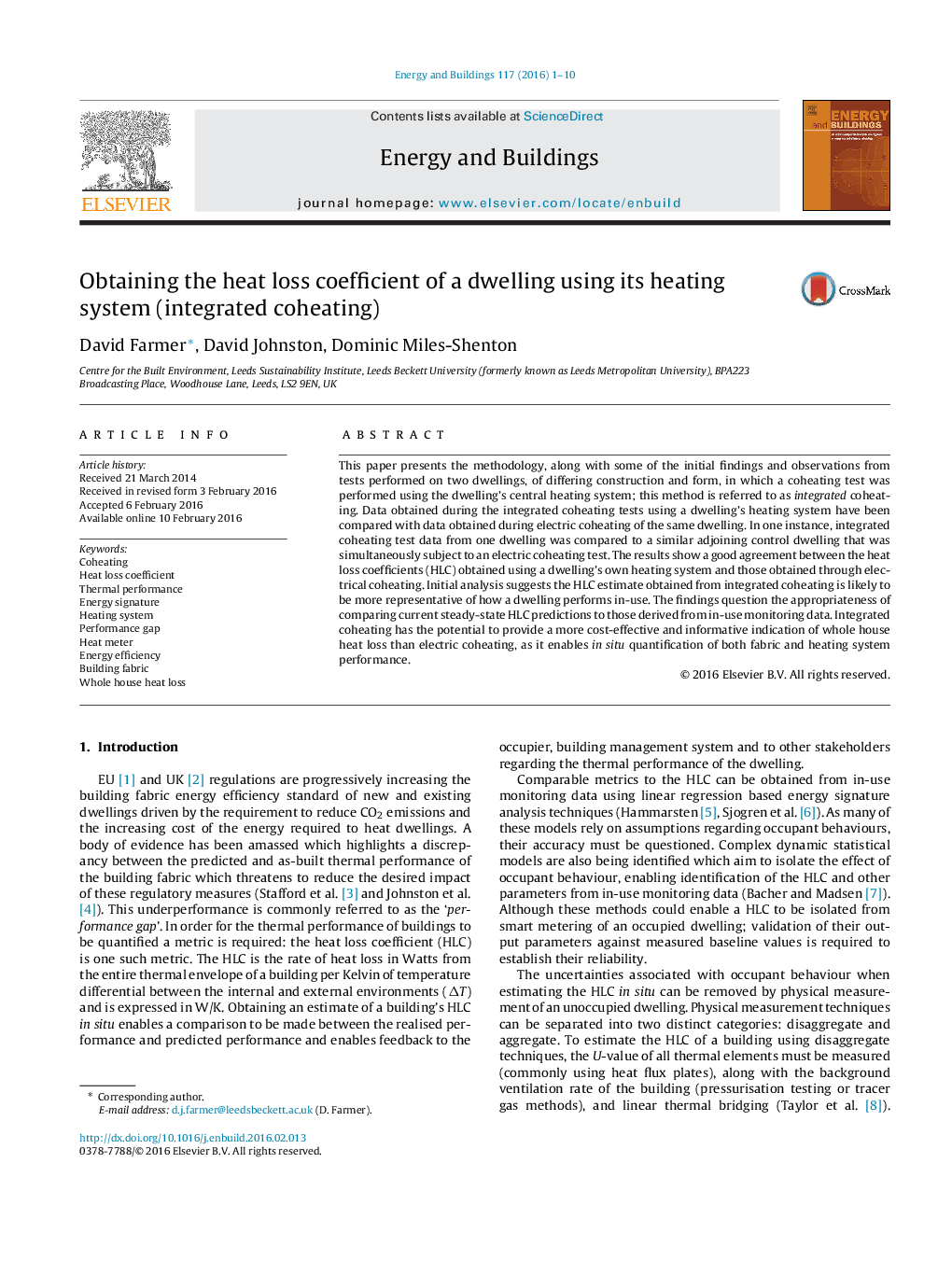| Article ID | Journal | Published Year | Pages | File Type |
|---|---|---|---|---|
| 6730267 | Energy and Buildings | 2016 | 10 Pages |
Abstract
This paper presents the methodology, along with some of the initial findings and observations from tests performed on two dwellings, of differing construction and form, in which a coheating test was performed using the dwelling's central heating system; this method is referred to as integrated coheating. Data obtained during the integrated coheating tests using a dwelling's heating system have been compared with data obtained during electric coheating of the same dwelling. In one instance, integrated coheating test data from one dwelling was compared to a similar adjoining control dwelling that was simultaneously subject to an electric coheating test. The results show a good agreement between the heat loss coefficients (HLC) obtained using a dwelling's own heating system and those obtained through electrical coheating. Initial analysis suggests the HLC estimate obtained from integrated coheating is likely to be more representative of how a dwelling performs in-use. The findings question the appropriateness of comparing current steady-state HLC predictions to those derived from in-use monitoring data. Integrated coheating has the potential to provide a more cost-effective and informative indication of whole house heat loss than electric coheating, as it enables in situ quantification of both fabric and heating system performance.
Keywords
Related Topics
Physical Sciences and Engineering
Energy
Renewable Energy, Sustainability and the Environment
Authors
David Farmer, David Johnston, Dominic Miles-Shenton,
